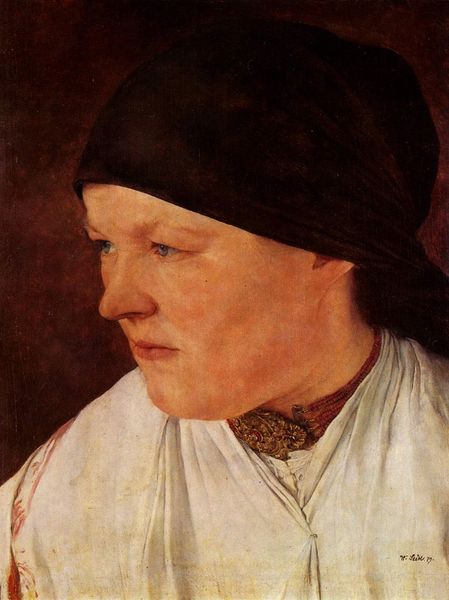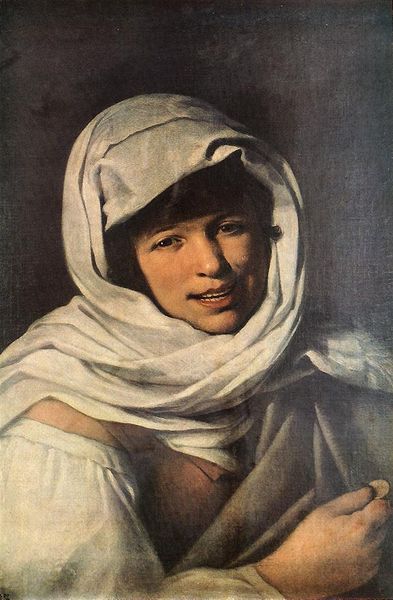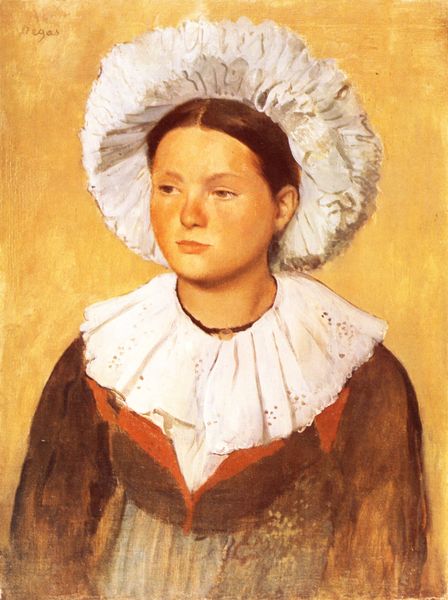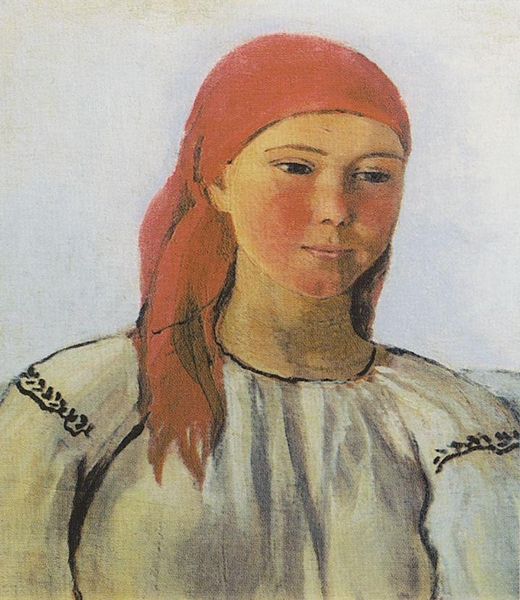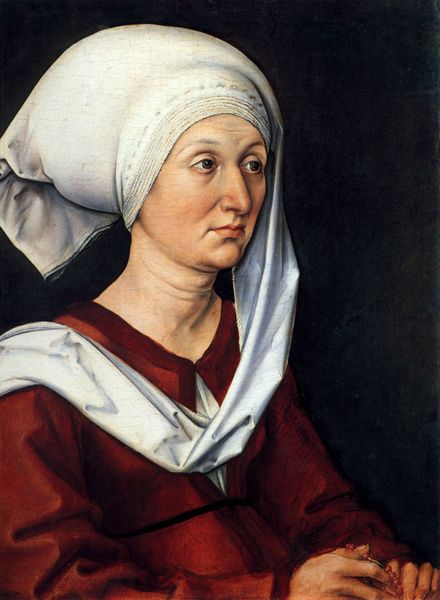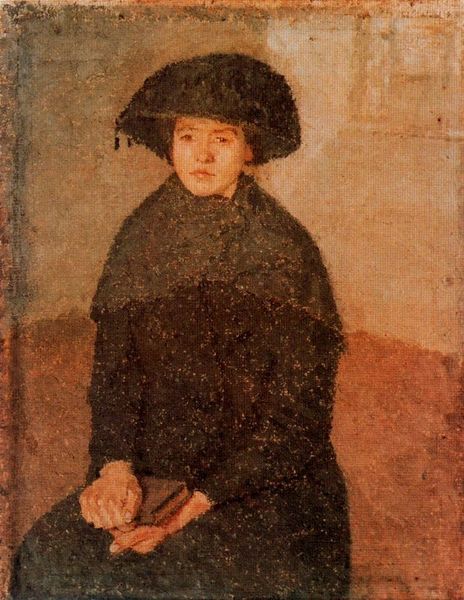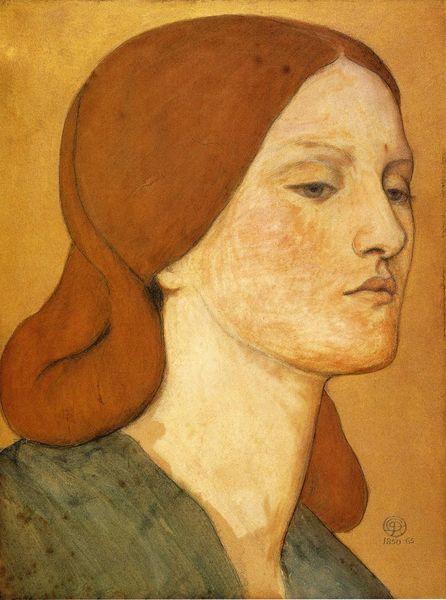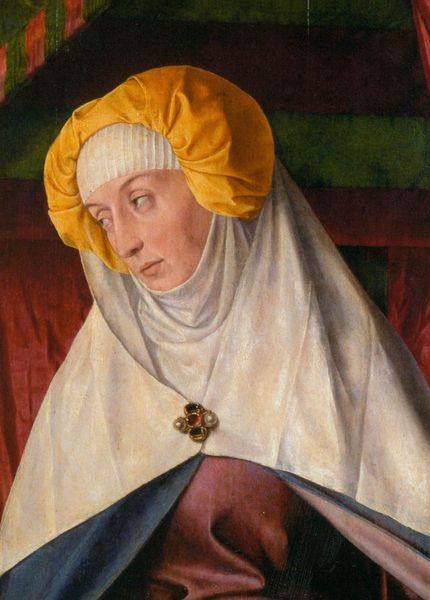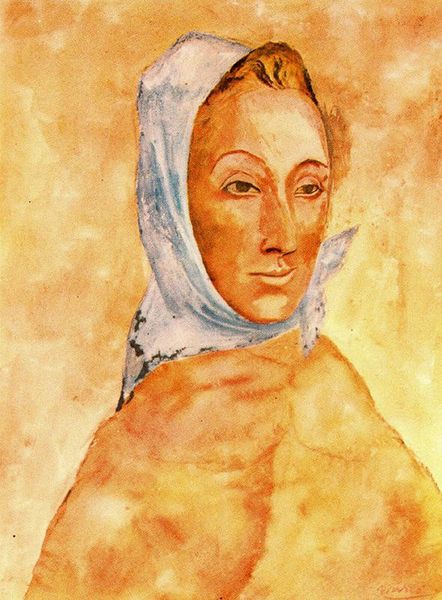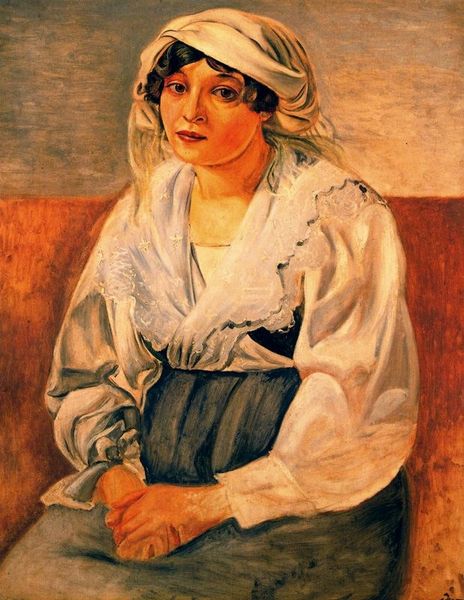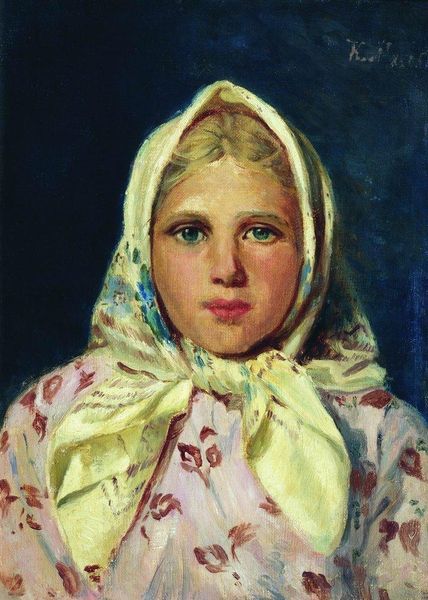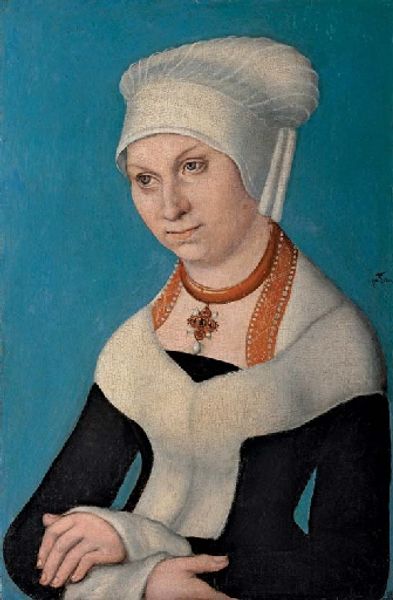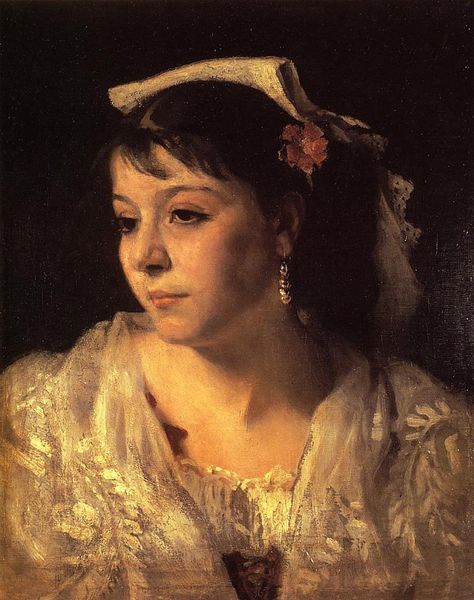
Copyright: Public domain
Editor: Here we have Wilhelm Leibl's "Bauernmädchen mit weißem Kopftuch," or "Peasant Girl with White Headscarf," painted in 1876. The way the light catches her face is quite striking; it gives her this luminous quality, almost like she’s a saint in a stained-glass window. What stands out to you in this piece? Curator: It’s a bit like peeking into someone’s quiet moment, isn't it? Leibl wasn't just painting a peasant girl; he was capturing a sense of dignity and quiet strength. Notice how he avoids romanticizing her. There’s an honesty in the way he renders her features, a realism that moves beyond the picturesque. What do you make of the textures? The way the paint is applied? Editor: Well, the impasto is definitely noticeable, especially in the headscarf. It almost seems sculptural, like he’s building the form with the paint itself. It's interesting how he balances the rough texture with the girl's smooth skin. Curator: Precisely! That tension is key. Leibl's realism wasn't about photographic accuracy. Instead, it delved into the psychological weight of the subject. Look at her eyes; they don't meet our gaze directly, do they? They hold a depth, a story we can only glimpse. Makes you wonder what she's thinking about, doesn't it? Or perhaps, more accurately, *not* thinking. Maybe it’s pure presence, simply *being*. Editor: I see what you mean. Initially, I saw just a pretty face, but now I'm struck by the character that comes through – that hint of resilience. I didn’t realize how much the texture added to that feeling. Curator: Indeed. It’s a lovely reminder that the magic of art lies not just in *what* is depicted but *how*. Editor: Definitely given me a lot to ponder. Thanks for opening my eyes to it!
Comments
No comments
Be the first to comment and join the conversation on the ultimate creative platform.
